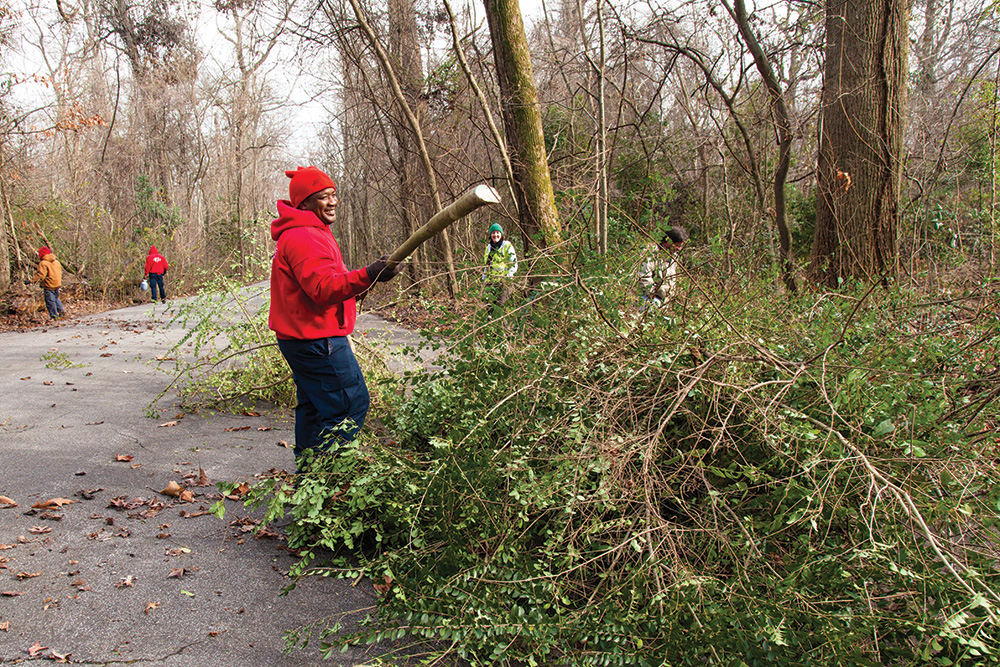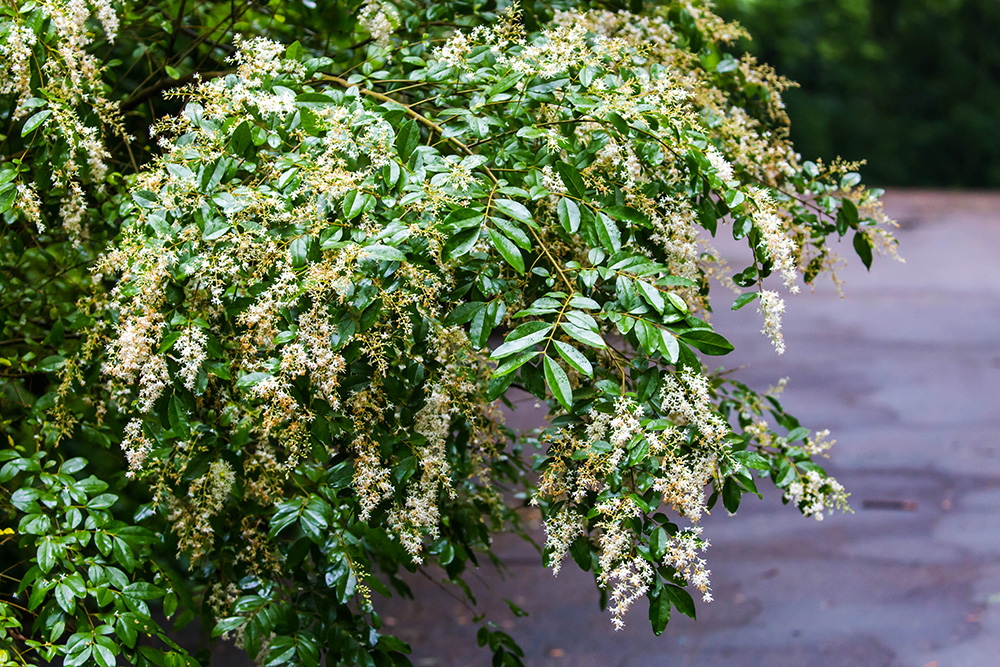Attacking privet in the Old Forest

If you walked through the Old Forest this winter, you probably noticed many piles of leafy branches along the trails. These piles were the results of Overton Park Conservancy’s aggressive efforts to fight non-native, invasive Chinese privet.
In 2012, 1,500 cubic yards of privet debris were removed from 35 acres of the Old Forest. Another 1,000 cubic yards were removed in 2013, and crews from Echo Systems, Ltd. covered all 126 acres of the Old Forest State Natural Area at least once.
Privet has likely been present in the Old Forest for over 60 years, since it became popular as a landscape plant in the 1950s and began spreading to natural areas. Some specimens removed from the Old Forest stood over 30 feet tall and 12-18 inches in diameter.
Privet’s rapid growth and the difficulty of controlling it make it one of the worst invasives in our region. It quickly closes off the understory of a forest, preventing new trees and shrubs from growing. The life cycle of the ecosystem is interrupted because there are fewer new trees to replace the old ones as they die. Because not many animals eat privet, it also eliminates plants that our native wildlife depend on for survival.

The Conservancy’s efforts to combat privet will continue well into the future, because any roots left in the ground will enable the plant to resprout.
“This battle will go on for years to come,” says Naomi Van Tol, Director of Operations and Capital Projects. “But by knocking out bushes that have been growing for decades, we’re removing seed stock and reducing the amount that will regrow.”
We’re thrilled to have donors and a board of directors who consider invasive removal an important investment. Although it may sound contradictory, active management of ecosystems dealing with harmful introduced species can be the best way to help them thrive as nature intended.



